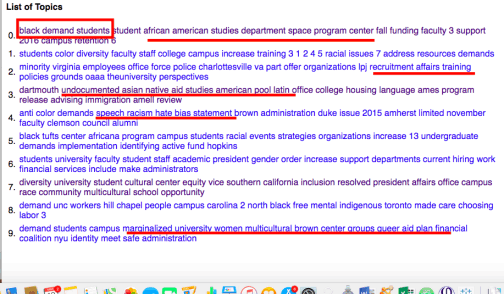**Click graph to see chart. Powered by Tableau Public.
Public institutions were less likely to demand additional funding/resources that private institutions. This could suggest students from public universities have more uneasiness in demanding funding as it is oftentimes less abundant at public universities.
Public institutions were more likely to demand space and/or a community center. Given is committment to the public/state and its larger size, this could suggest public unveristies have less space designated for its students.






